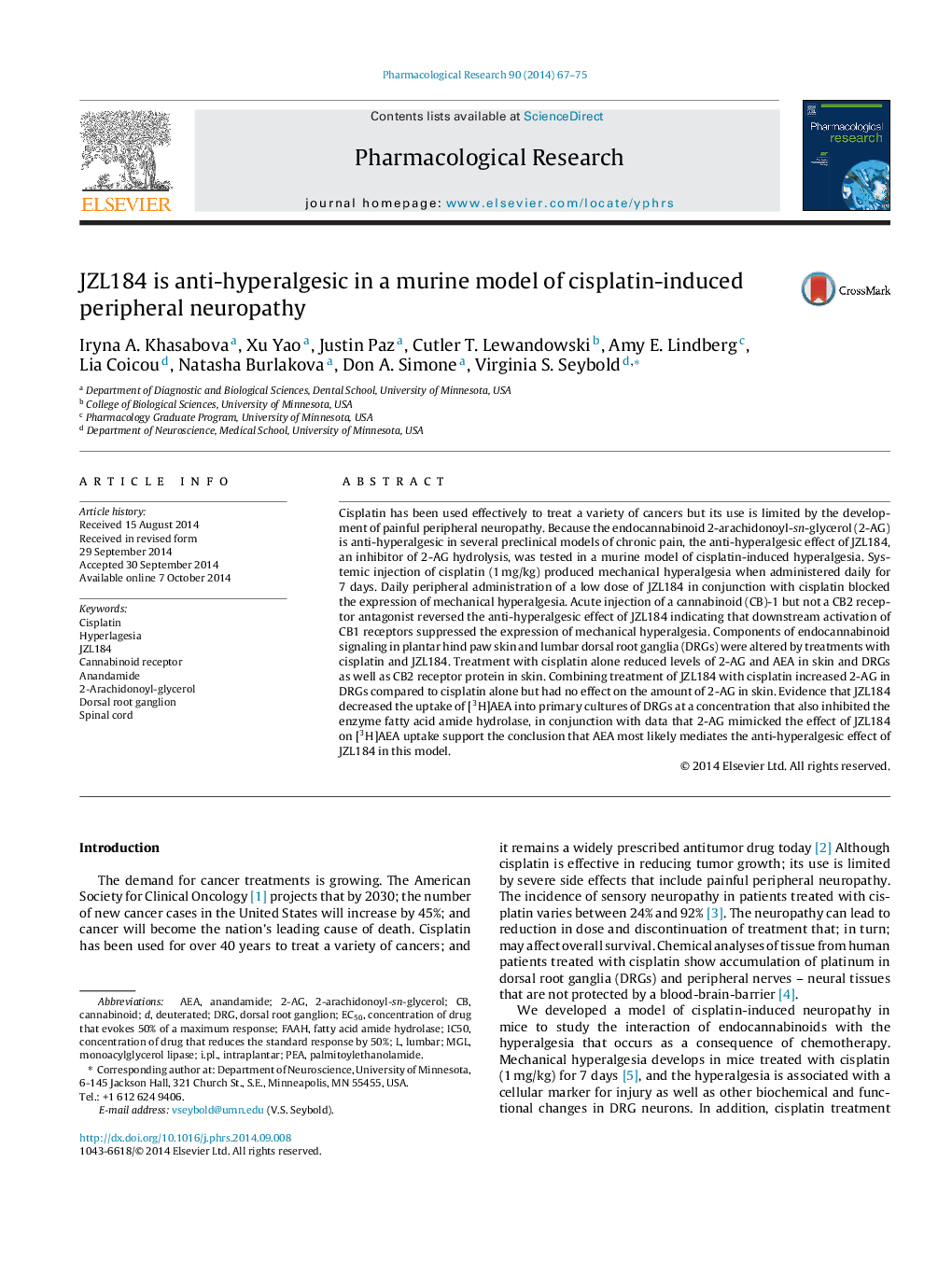| Article ID | Journal | Published Year | Pages | File Type |
|---|---|---|---|---|
| 2562205 | Pharmacological Research | 2014 | 9 Pages |
Cisplatin has been used effectively to treat a variety of cancers but its use is limited by the development of painful peripheral neuropathy. Because the endocannabinoid 2-arachidonoyl-sn-glycerol (2-AG) is anti-hyperalgesic in several preclinical models of chronic pain, the anti-hyperalgesic effect of JZL184, an inhibitor of 2-AG hydrolysis, was tested in a murine model of cisplatin-induced hyperalgesia. Systemic injection of cisplatin (1 mg/kg) produced mechanical hyperalgesia when administered daily for 7 days. Daily peripheral administration of a low dose of JZL184 in conjunction with cisplatin blocked the expression of mechanical hyperalgesia. Acute injection of a cannabinoid (CB)-1 but not a CB2 receptor antagonist reversed the anti-hyperalgesic effect of JZL184 indicating that downstream activation of CB1 receptors suppressed the expression of mechanical hyperalgesia. Components of endocannabinoid signaling in plantar hind paw skin and lumbar dorsal root ganglia (DRGs) were altered by treatments with cisplatin and JZL184. Treatment with cisplatin alone reduced levels of 2-AG and AEA in skin and DRGs as well as CB2 receptor protein in skin. Combining treatment of JZL184 with cisplatin increased 2-AG in DRGs compared to cisplatin alone but had no effect on the amount of 2-AG in skin. Evidence that JZL184 decreased the uptake of [3H]AEA into primary cultures of DRGs at a concentration that also inhibited the enzyme fatty acid amide hydrolase, in conjunction with data that 2-AG mimicked the effect of JZL184 on [3H]AEA uptake support the conclusion that AEA most likely mediates the anti-hyperalgesic effect of JZL184 in this model.
Graphical abstractFigure optionsDownload full-size imageDownload high-quality image (111 K)Download as PowerPoint slide
